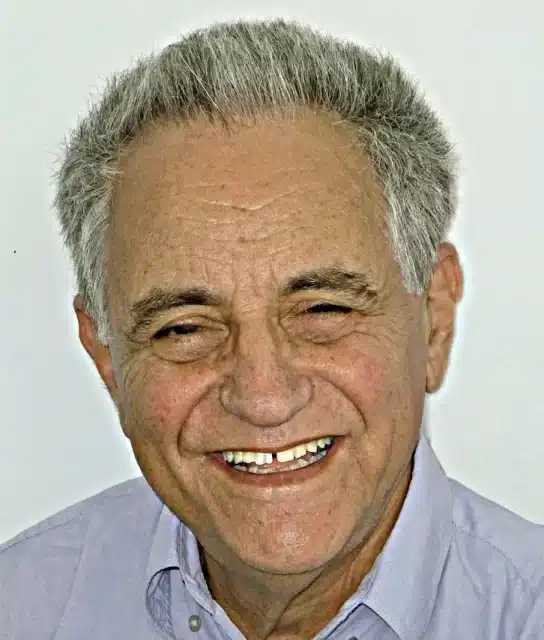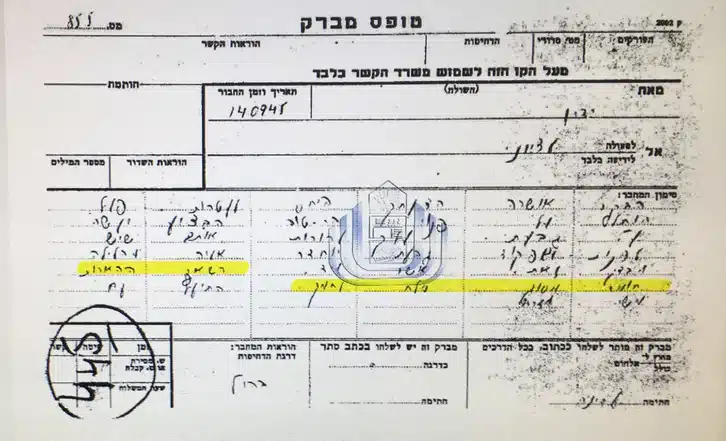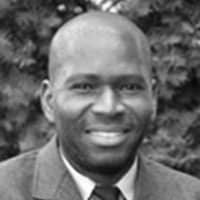By Haaretz
On April 1, 1948, David Ben-Gurion wrote in his journal about “the development of science and speeding up its application in warfare.” A month and a half later, he wrote about “biological materials” that were purchased for $2,000. Only now, 74 years later, has a connection between these two entries come to light.
The disturbing story behind them was recently uncovered by historian Benny Morris and historian and Israel Prize laureate Benjamin Z. Kedar following extensive archival research. Evidently, the excerpts from the diary of the man who would become Israel’s first prime minister are traces of his involvement in a secret operation to poison the drinking water of Arab communities during the War of Independence.
This operation was partially exposed decades ago when rumors and oral testimonies were reported in newspapers and books about an attempt in 1948 by the IDF to poison wells in Acre and Gaza by adding bacteria to the drinking water. However, only now, in Morris and Kedar’s research, has the “smoking gun” been revealed – in the form of official documentation. The newly unearthed documents show that this operation was much broader in scope than earlier believed and that other top military and political figures besides Ben-Gurion were involved.

“We uncovered a lot of new information. We deciphered how the operation developed through its various stages; we discovered who authorized, organized, and controlled the operation, and how it was carried out in different areas,” Morris says. “We have a much fuller picture now, and one that is based in part on IDF documentation,” Kedar adds.

The pair recently published an article in the journal Middle Eastern Studies titled “‘Cast Thy Bread’: Israeli Biological Warfare during the 1948 War.” “Cast Thy Bread” was the operation’s code name. Naturally, most of the material related to the episode is censored, but when Morris searched through the IDF archives for any mention of the operation by name, he was surprised to discover numerous documents. Morris writes in the article that the censor apparently was not aware of what the code name referred to.
Dayan – now calling himself, in code, “Moshe Neptune” – cabled Yadin: “Cast Thy Bread will be activated by Nahshon [meaning Operation Nahshon forces, which included the Harel Brigade] on Monday or Tuesday. I will come down mid-week with all the material.”
Yadin instructed senior IDF commanders: “There is an immediate need to appoint in your HQ a special officer for Cast Thy Bread matters. The matter is of utmost importance and must be kept in great secrecy by you.”
In another cable, Yadin writes: “Place in the wells material of the Cast Thy Bread type.” And in another cable: “Is there authorization to use B [the Hebrew letter Bet] in the areas that will be evacuated by us [i.e., Israel]?”

The operation began in April 1948, when fears of an invasion by Arab armies were mounting. The plan was to poison wells in abandoned Arab villages as well as in Jewish locales that were due to be evacuated by the state-in-the-making. The idea was to prevent Arabs from returning to their villages and from settling in Jewish locales that would fall into their hands.
The operation initially focused on the area between Jerusalem and Tel Aviv, and later expanded to Acre in the north and Gaza in the south. The evidence indicates that it later included – either in planning or in effect – other communities such as Jericho, Be’er Sheva, Ilaboun, Bidu, Beit Suriq, Beit Mahsir, and Har-Tuv (after the Jews were evacuated).
The possibility of adding targets outside of Israel such as Cairo and Beirut was also proposed, but nothing came of it. The idea behind that was to hinder the Arab armies’ advance.

Morris found dramatic evidence about the operation in the archives of Kibbutz Na’an, in testimony provided in 1988 by a kibbutz member, the archaeologist Shemarya Guttman, who was a Palmah commander and senior IDF intelligence officer.
Guttman told of how General Yohanan Ratner, the senior commander whom Ben-Gurion tagged to head the operation, informed him about sending “two people to the Egyptian border to do this job [concerning] wells.” The two were David Mizrahi and Ezra Horin (Afgin), who set out for the mission in Gaza on May 22, 1948, but were caught and tried in an Egyptian military court for poisoning wells with bacteria, and later executed.

Guttman recounts that he vehemently opposed the operation on moral grounds and also warned that poisoning the water could harm Jews as well. “Look, we may also conquer this area tomorrow and drink from this water, and all our army will also be sick with typhus or dysentery,” he told Ratner. When he asked to be issued the order in writing, his request was refused. “[Ratner] said to me, ‘I will never give such a thing [in writing].’”
Guttman goes on to report that he asked “what sort of material were they talking about – ‘liquid or powder … and he then decided it would be powder.’” He also notes that “the two were caught red-handed.”
Another testimony located by Morris and Kedar was hidden in an interview given by former ambassador Asher Ben-Natan to historian Nir Mann in 2008. Ben-Natan described another phase of the operation: an attempt to poison wells in Cairo.
In the summer of 1948, Ben-Natan was in Paris as part of his position in operational intelligence. Intelligence officer Binyamin Gibli met him there and gave him “a capsule to be used for poisoning wells in Cairo.” But the plan was scrapped and, said Ben-Natan, “I was left with the poison capsule, and in the end, I destroyed it in the sewer.” Morris and Kedar also found evidence of this in the IDF archives, in a document from September 1948, in which Yadin writes: “Please call soon … in regard to the activation of Cast Thy Bread abroad.”

The collection of photographs by his son Rothenberg. The documents show that Ben-Gurion was at the top of the pyramid. Below him was Yadin, who oversaw the military side of the operation. The operation was commanded by Yohanan Ratner. Initially, the top man in the field for the group was Dayan, who went on to become the IDF chief of staff and defense minister. The documents indicate that Dayan served as the smuggler who conveyed the bacteria from the Science Corps to different points throughout the country.
David Shaltiel, commander of the Etzioni Brigade in Jerusalem, was also involved in the operation. Intelligence officer Ezra Helmer (later Omer, head of the Haganah General Staff Intelligence Department) also joined at a later stage. The identity of another person who was involved in the operation remains uncertain. In cables, he is referred to as “Mizrahi.”
In the beginning, it was ordinary soldiers, such as soldiers from the Harel Brigade’s fourth battalion, who did the dirty work of poisoning the wells. Later on, the job was given to members of the Palmach’s Arab division, the “mistarvim,” who specialized in sabotage operations and assassinations in enemy territory.

On the scientific side, the production of the poison, were people from the IDF Science Corps Bet, a subunit in the Science Corps that dealt with biological warfare.
It was headed by Alex Keinan, who went on to found the Israel Institute for Biological Research in Nes Tziona. The scientific work was overseen by the Katchalski (Katzir) brothers: biophysicist Ephraim Katzir, the first commander of the Science Corps and later an Israel Prize laureate and the fourth president of Israel; and his older brother, scientist Aharon Katzir of the Weizmann Institute, who was killed in the 1972 terror attack at Lod Airport. “A series of assistants who went on to become professors in Israeli academia were also involved in the operation,” Morris says.

The operation echoed the plan of the “Avengers” led by Abba Kovner to poison water and food sources in Germany after World War II to cause mass killings. The Katzir brothers were also involved in this operation and supplied the poison to Kovner, but ultimately he, too, threw it into the sea before he was arrested by the British. Morris and Kedar believe that the objective of the IDF operation was not to cause mass killings but rather to disrupt the Arabs’ moves.
Ultimately, the operation did not change the face of the war. According to various reports, several dozen Arabs did fall ill, mainly in Acre. The operation drew scathing criticism within the system – both within the IDF and among the Yishuv leadership – in part because it violated the 1925 Geneva Protocol banning “the use of bacteriological methods of warfare.

Jonas E. Alexis has degrees in mathematics and philosophy. He studied education at the graduate level. His main interests include U.S. foreign policy, the history of the Israel/Palestine conflict, and the history of ideas. He is the author of the book, Kevin MacDonald’s Metaphysical Failure: A Philosophical, Historical, and Moral Critique of Evolutionary Psychology, Sociobiology, and Identity Politics. He teaches mathematics in South Korea.
ATTENTION READERS
We See The World From All Sides and Want YOU To Be Fully InformedIn fact, intentional disinformation is a disgraceful scourge in media today. So to assuage any possible errant incorrect information posted herein, we strongly encourage you to seek corroboration from other non-VT sources before forming an educated opinion.
About VT - Policies & Disclosures - Comment Policy




But do not these Zionist schemes for the elimination og Palesinian Arabs still continue?
The Attacks on ‘Asah(Gaza) (that “unsown strip of herbage strewn — between the wilderness and strown” (.British elisabethan trenslation of Omar Qai’iam the “Tentmaiker”) strip of ‘Affa concentration camps toslow-kill Semites in their Israeli cosentration camps.
How many despondent and cuewd Palestinians did i not encounter in my years in Izraël!
The partition scheme from 1947 and also in 1967 did only encompass some areas traditionally óccupied by the Phillistines (The “Sea Paople” or some Karthagian, European or Euro-nordic Lebanese invaders — just like in 1870-1994)). Those areas neither encompassed any perts of Judea nor of the areas of ancient izraël, Thus, the name of the Jewish phallocracy is stolen from the lands they had no right to att all, Therefore also the falshood of Israëli occupants calling the ancient area of IZraël renaming that land as “Samaria”.
Comments are closed.